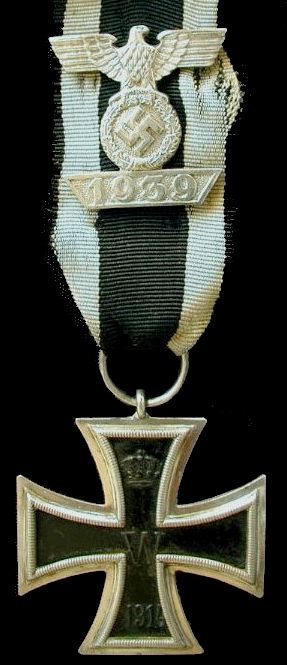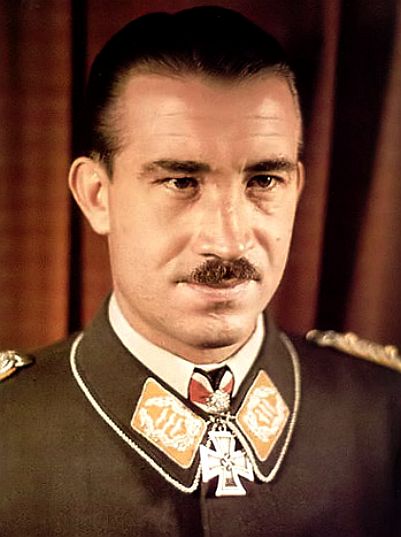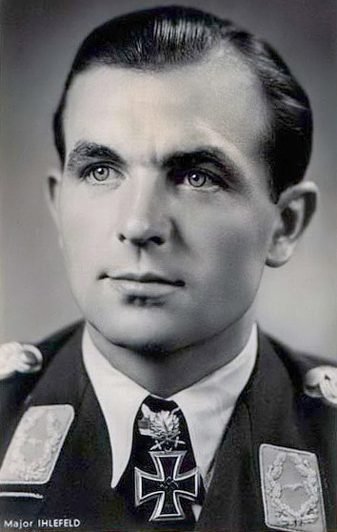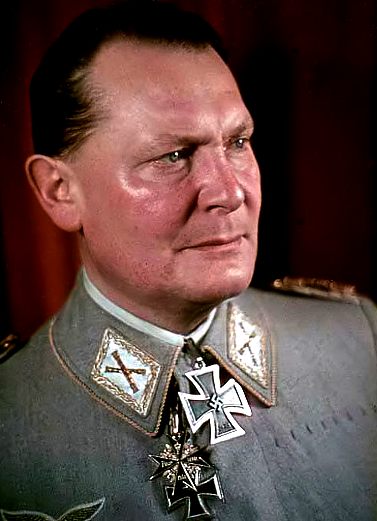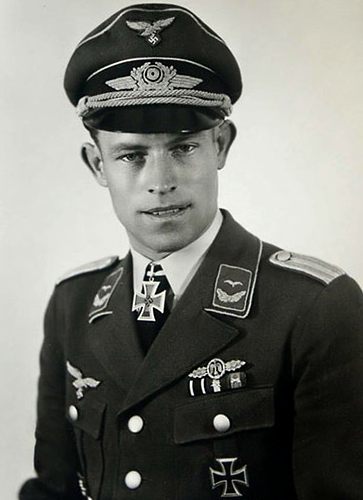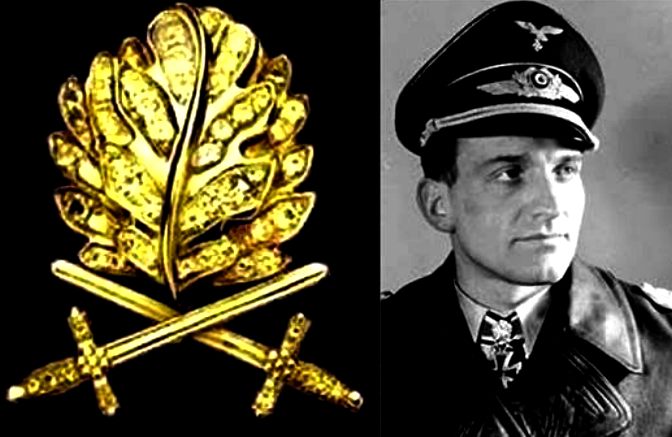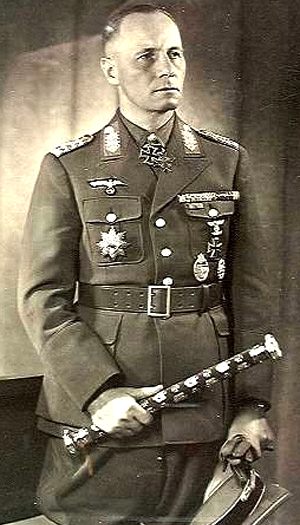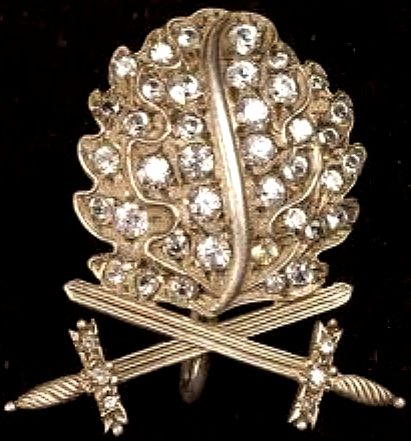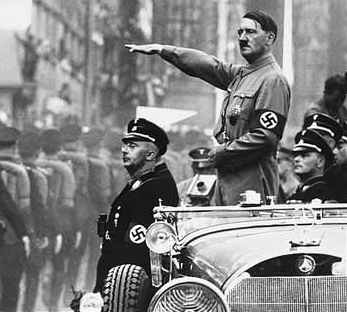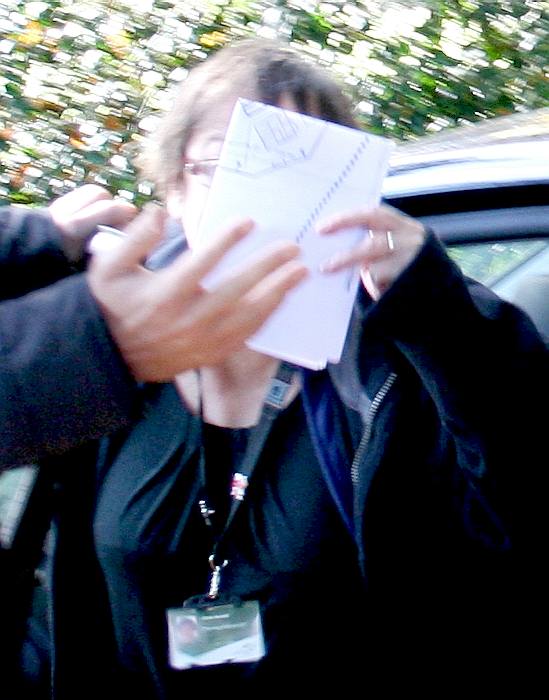|
THE IRON CROSS
HOME | CASE STUDIES | HISTORY | LAW | POLITICS | RIGHTS | SITE INDEX |
|||
|
The Iron cross is a medal that was awarded for gallantry.
The Iron Cross is a cross symbol typically in black with a white or silver outline that originated after 1219 when the Kingdom of Jerusalem granted the Teutonic Order the right to combine the Teutonic Black Cross placed above a silver Cross of Jerusalem.
KNIGHTS CROSS
The Knight's Cross of the Iron Cross (German language: Ritterkreuz des Eisernen Kreuzes), or simply the Knight's Cross (Ritterkreuz) was a grade of the 1939 version of the Iron Cross (Eisernes Kreuz), which had been created in 1813. The Knight's Cross was the highest award made by Nazi Germany to recognize extreme battlefield bravery or outstanding military leadership during World War II. In the military orders of the Third Reich, it was second only to the Grand Cross of the Iron Cross (Großkreuz des Eisernen Kreuzes), an award that was given only once, to Nazi leader and Hitler's second-in-command Hermann Göring. He was granted it as a result of his services in building up the Luftwaffe (the German air force), and for serving as its commander-in-chief. The Knight's Cross was therefore functionally the highest order that German soldiers of all rank could obtain.
In post-World War II Germany, the Federal Republic of Germany prohibited the wearing of Nazi insignia. In 1957 the German government authorized a replacement Knight's Cross of the Iron Cross, with an oak leaf cluster in place of the swastika, which could be worn by World War II Knight's Cross recipients. In 1986, the Association of Knight's Cross Recipients (AKCR) acknowledged 7,322 presentations made to the members of the three military branches of the Wehrmacht—the Heer (Army), Kriegsmarine (Navy) and Luftwaffe (Air Force)—as well as the Waffen-SS, the Reichsarbeitsdienst (RAD—Reich Labour Service) and the Volkssturm (German national militia). There were also 43 recipients in the military forces of allies of the Third Reich for a total of 7,365 recipients.
Analysis of the German National Archives revealed evidence for 7,162 officially—de facto and de jure—bestowed recipients, including one additional presentation previously unidentified by the AKCR. The AKCR names 890 recipients of the Oak Leaves to the Knight's Cross, including the eight recipients who served in the military forces of allies of the Third Reich. The German National Archives do not substantiate 27 of these Oak Leaves recipients. The Swords to the Knight's Cross were awarded 160 times according to the AKCR, among them the posthumous presentation to the Japanese Admiral Isoroku Yamamoto, 13 of which cannot be supported by the German National Archives. The Diamonds to the Knight's Cross were awarded 27 times, all of which are verifiable in the German National Archives. The final grade, the Golden Oak Leaves to the Knight's Cross was verifiably awarded once to Hans-Ulrich Rudel on 29 December 1944.
FAIR USE NOTICE
This site contains copyrighted material the use of which has not always been specifically authorized by the copyright owner. We are making such material available in our efforts to advance understanding of environmental, political, human rights, economic, scientific, and social justice issues, etc. We believe this constitutes a 'fair use' of any such copyrighted material as provided for in section 107 of the US Copyright Law. In accordance with Title 17 U.S.C. Section 107, the material on this site is distributed without profit to those who have expressed a prior interest in receiving the included information for research and educational purposes.
Adolf Hitler and chum Heinrich Himmler [Allegedly, Adolf Hitler did not die in that bunker incident C.1949. Apparently, he was fired into England, strapped to a V1 rocket, leaving behind his false teeth. He parachuted into Wealden that night hoping to meet some deviants, who'd arranged a new identity for their fallen comrade. Apparently, he landed in Crowborough, shaved off his moustache and was mistaken for a council official. Job done.]
Victorio Scarpa, David Whibley, Julian Black, Daniel Goodwin, Christine Arnold
Christine Nuttall, David Phillips, Douglas Moss, Ian Kay, Charles Lant
Abbott Trevor - Alcock Charmain - Ditto - Arnold Chris (Christine) - Barakchizadeh Lesley - Paul Barker - Bending Christopher Black Julian - Boakes Beverley - Bradshaw Clifford - Brigginshaw Marina - Brown Ashley - Coffey Patrick - Douglas Sheelagh Dowsett Timothy - Flemming Mike - Forder Ralph - Garrett Martyn - Goodwin Daniel - Henham J - Holness Derek Hoy Thomas - Johnson Geoff - Kavanagh Geoff - Kay Ian - Kay I. M. - Barbara Kingsford - Lant Charles - Mercer Richard Mileman Niall - Moon Craig - Moss Douglas, J. - Nuttall Christine - Pettigrew Rex - Phillips David - Scarpa Victorio - Scott Trevor Kevin Stewart - Wakeford M. - Whibley David - White, George - Williams Kelvin - Wilson Kenneth - White Steve
LINKS & REFERENCE
http://www.cimilitaria.com/Iron%20Cross%20page%203.htm http://www.feldgrau.com/rkosd.html http://en.wikipedia.org/wiki/Iron_Cross http://en.wikipedia.org/wiki/Knight's_Cross_of_the_Iron_Cross http://www.wehrmacht-awards.com/iron_cross/ironcrossmain.htm
With thanks to the Wealden Action Group and other Action Groups across the country for the supply of real case history and supporting documents.
*THAT THE PUBLIC MAY KNOW*
|
|||
|
This site is free of © Copyright except where specifically stated 1997 - 2018. Any person may download, use and quote any reference or any link, and is guaranteed such right to freedom of information and speech under the Human Rights and Freedom of Information Acts. However, be aware that we cannot be held liable for the accuracy of the information provided. All users should therefore research matters for themselves and seek their own legal advice and this information is provided simply by way of a guide. Horse Sanctuary Trust UK All trademarks herby acknowledged. Contact Us.
|
